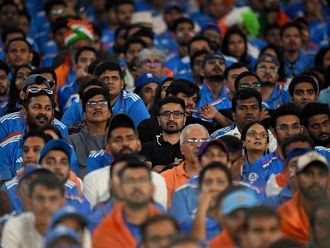
The former prime minister of Malaysia, Mohammad Mahathir, walked the "Look East" path, motivated, largely, by anti-western sentiments that often left him in the West's bad books. India has evolved its own "Look East" policy which, however, pursues strategic geopolitical and economic goals.
Indian Prime Minister Manmohan Singh has decided not to visit New York this year for the UN General Assembly, usually an ideal venue for world leaders to hold bilateral discussions on the sidelines. Indeed, Singh will miss an event in New York where he was to be honoured with the World Statesman Award for 2010 from the Appeal of Conscience Foundation.
Instead, Singh will visit Malaysia, Japan and Vietnam in October, concentrating on increasing cooperation with Southeast Asia. Guided by economic pragmatism, the 10-member Association of Southeast Asian Nations (Asean), to which Malaysia and Vietnam belong, has evolved into an attractive 550 million-strong consumer market which, after China and India, exudes a magnetic appeal to the world's industry.
Besides the large consumer base, the region is also rich in raw materials, and energy, which India badly needs for its future development. India is looking for an alternative source of gas because the much-discussed Iran gas pipeline, planned to feed gas to India, would pass through arch-rival Pakistan's territory and looks unappealing to many Indian experts.
In Japan, apart from trade and business, Singh will also discuss civil nuclear cooperation and UN reforms, with both India and Japan aspiring, along with Brazil and Germany, to gain a permanent seat on the Security Council.
In contrast, the South Asian Association for Regional Cooperation (Saarc) has made little progress in the 25 years since its formation, thanks mainly to the hostility between arch-rivals India and Pakistan. Apparently alluding to Saarc's dismal performance, India's External Affairs Minister S.M. Krishna recently pointed to the dynamic growth rates posted in trade and investment in East Asia and Southeast Asia.
Cooperation between India and Asean has also steamed ahead at a fast pace. India was a full dialogue partner at the fifth Asean Summit in Bangkok in 1995 and, subsequently, became a member of the Asean Regional Forum in 1996. India and Asean have held summit meetings annually since 2002. Singh will participate in the Asean-Indian summit in Vietnam on October 24.
A free-trade agreement with Asean signed in August 2009 in Thailand will significantly boost the group's economic and trade relations with India. India's trade with Asean has surged from $39.08 billion (Dh143.7 billion) in 2007-08 to $45.34 billion in 2008-09. There is great potential for trade and investments between India and Asean. As one Malaysian diplomat put it, "the sky is the limit".
Burgeoning trade
Cooperation will intensify with the impending finalisation of a Comprehensive Economic Cooperation Agreement with individual Asean countries such as Singapore and Malaysia. Trade is expected to double and, in some cases, even triple. Indeed, Malaysian Prime Minister Mohammad Najeeb Abdul Razak, according to Malaysian High Commissioner in Delhi Tan Seng Sung, has set an "ambitious target" of $50 billion in Indo-Malaysian trade by 2015, up from $7.06 billion in 2009.
Both India and Asean envision the creation of a huge market embracing a combined population of nearly 1.8 billion, with strong economic and political clout.
While the acrimonious India-Pakistani relationship has impeded Saarc's progress, Indian leaders have, generally, enjoyed a cordial relationship with the Asean leaders since India's economic liberalisation a decade back. This relationship has been evident in Singh's personal chemistry with Asean leaders visiting Delhi in recent years.
Many leading Indian companies have made substantial investments in a number of Asean countries and, conversely, Asean countries have also made huge investments in India. Asean companies are vying for a slice of India's $500 billion infrastructure pie.
Though India-Asean relations may appear to be driven by economic considerations, both sides also pursue strategic interests, as an increasingly belligerent China displays its economic and military might in a region where competition over the Spratly Islands worries many Asean countries. It is not surprising that the otherwise soft-spoken Singh reacted angrily to China needling India on a number of issues, including the presence of Chinese soldiers in Pakistan-administered Kashmir, where China claims they are performing "humanitarian service".
India's "Look East" strategy will also enable it to entrench its presence in the region, which has one of the world's busiest shipping lanes and is of vital interest to all players.
Manik Mehta is a commentator on Asian affairs.








